The SilverStone CS280 is a compact mITX chassis that has 8x hot-swap bays. If you want to build a small form factor all-SSD array, there are not many choices on the market. In our SilverStone CS280 review, we are going to show off the features of the chassis. We are then going to build a NAS out of it, and see how it performs. Last year Patrick did an Improbable Hyper-Converged NAS build log based on the SilverStone CS01-HS which you can find here. This year, we are going to up the ante and fit not just an embedded product, but a full Intel Xeon Scalable system in the small chassis.
SilverStone CS280 Overview
Officially, the model we have is the SilverStone SST-CS280B that we are calling the “SilverStone CS280.” This is a small form factor (SFF) case that fits a mini-ITX or mini-DTX motherboard and holds eight 2.5-inch hot-swappable SAS or SATA drives. The case itself is bigger than most 8-bay pre-built NAS units we have reviewed. The extra depth of the CS280 is needed to hold a power supply that most NAS appliances do not use, as they use a power brick much smaller power supplies. This may not be readily apparent when looking online, so look at measurements, especially the depth.
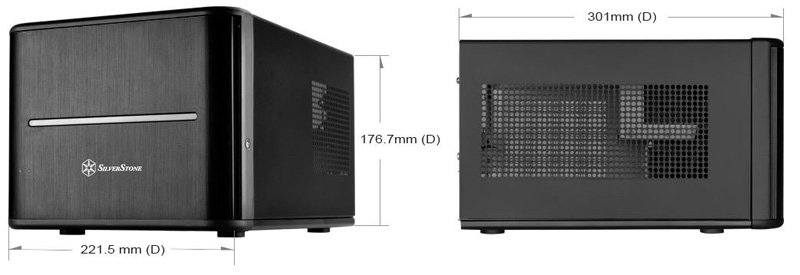
The enclosure of the CS280 comes in at 221.5mm (W) x 176.7mm (H) x 301mm (D) or 8.72” (W) x 6.96” (H) x 11.85” (D). As we can see by the above pictures there are ample cooling vents along the sides and top of the case. Here are the key specs:
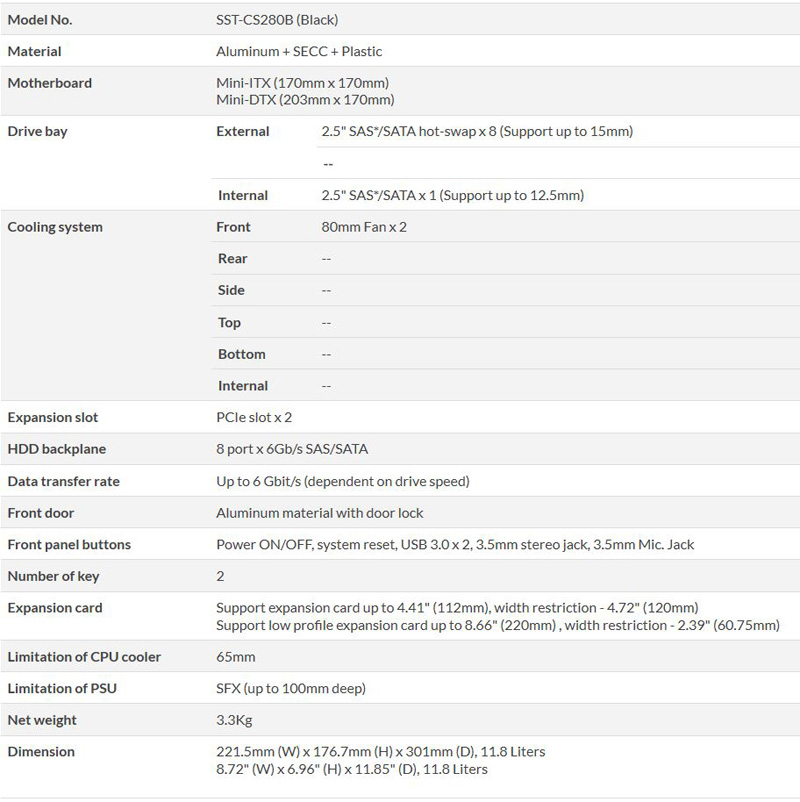
Two key specifications to look at here is the limitation of 65mm CPU Cooler height. At this size, a standard Intel Xeon E3/ Xeon E heatsink will work fine, but it is a tight fit for any aftermarket coolers. Next, is the PSU depth specification at 100mm, this falls into the SFX PSU size.
After opening the door we see the general layout of the front of the SilverStone CS280. At the top, we see the 8-bay 2.5” drive cage, below the HDD cage, are two 80mm cooling fans. Over to the left, we see two USB 3.0 ports, audio jacks, and power/reset buttons. There is also a status LED between the power/reset buttons.
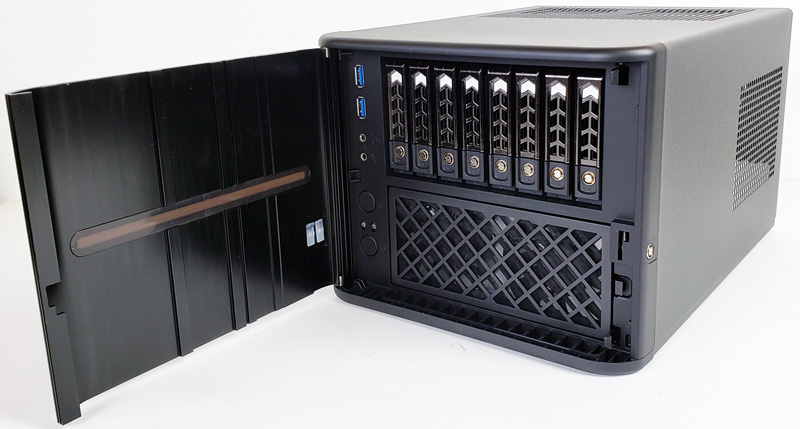
One feature that we find a big plus is the removable air filter at the front of the two 80mm cooling fans built into the case. We also like the removable dust filter in front of the two cooling fans, this greatly aids in keeping inside the case dust free and allows for removal and cleaning.
Looking at the rear of the CS280 we see the knockouts for the PSU and motherboard I/O plate and two PCIe slots at the right. If you wanted a GPU or another double-wide PCIe device, you could do that here.
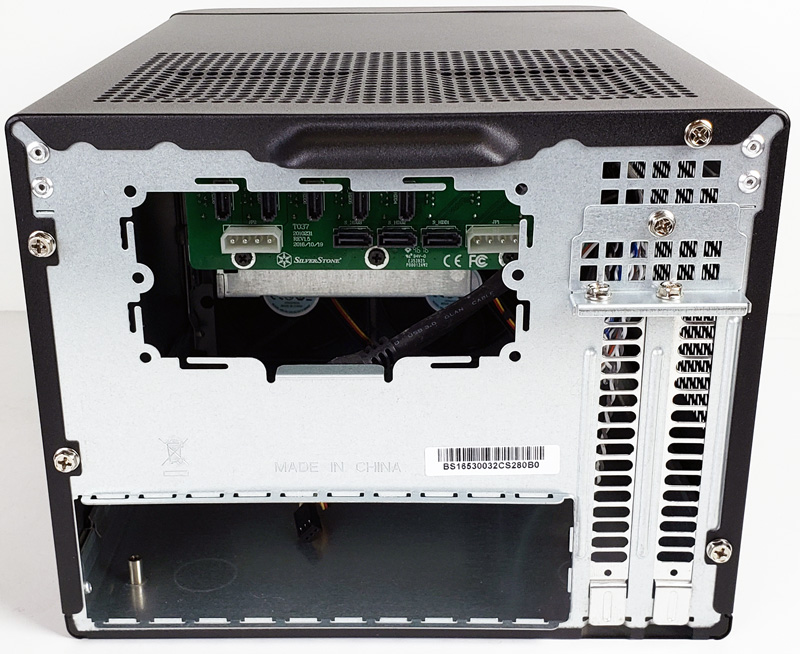
Looking at the 8-bay drive cage backplane, we see a simple design. This backplane requires two power connections via Molex connectors. Eight SATA connections are spread across the middle and power caps take up the majority of the space. The power caps can be bent around very easily so care should be taken to not break them.
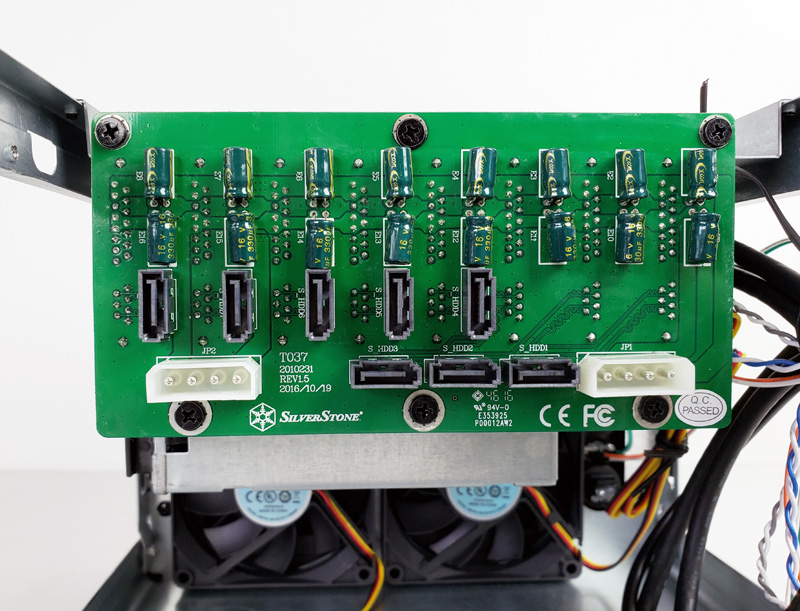
As a quick aside, one can use SAS to SATA breakout cables, but we suspect most users will utilize SATA SSDs here.
With the cover removed we see how much space we have to work with inside the CS280. It is clear to see why an SFX power supply is needed as space is very tight. Another item one can probably see is that the cables are long, and we have not yet installed a PSU, nor the SATA cables for the backplane. This is a small chassis with a lot of cables inside.
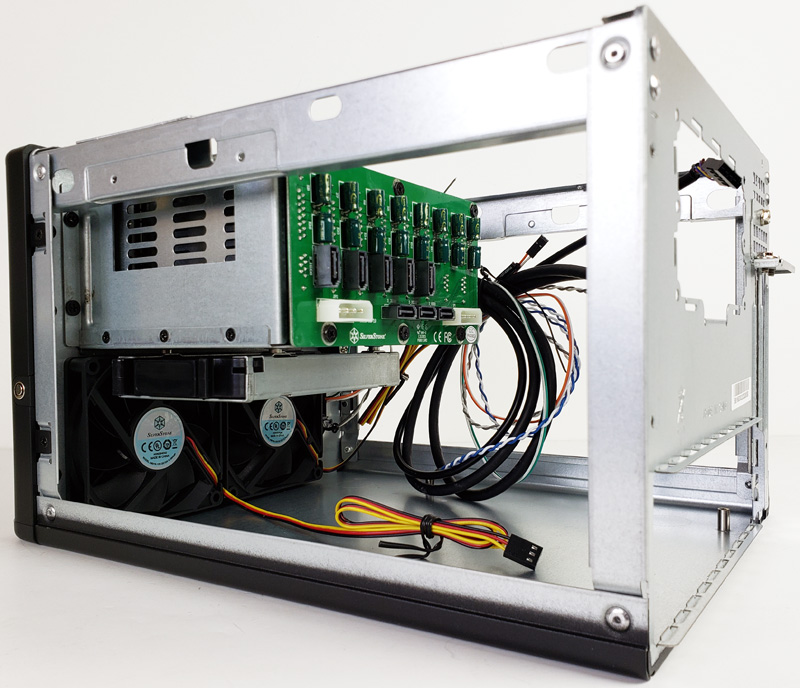
The fans utilized are 3-pin units. We would have preferred here if the fans were 4-pin PWM units which allows easier control of the fan speed. In 2019, virtually every motherboard that one would use in this chassis has 4-pin fan headers.
Under the 8-bay 2.5” cage is a single 2.5” drive cage for an OS SSD. This cage can be removed if space is needed underneath. Technically, this makes the unit a 9x 2.5″ chassis.
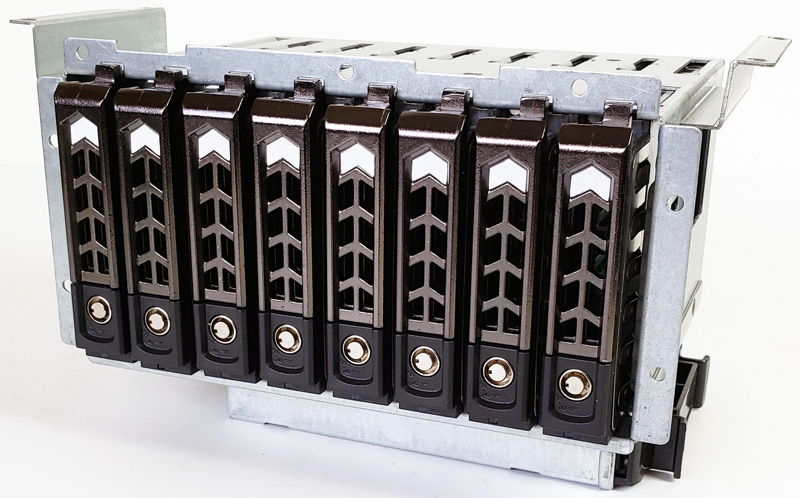
The 8-bay 2.5” drive cage is removable to make installing the motherboard easier. We will need that as we get into our review and build a high-performance NAS in this device. Let us move on to getting our hardware installed and testing.

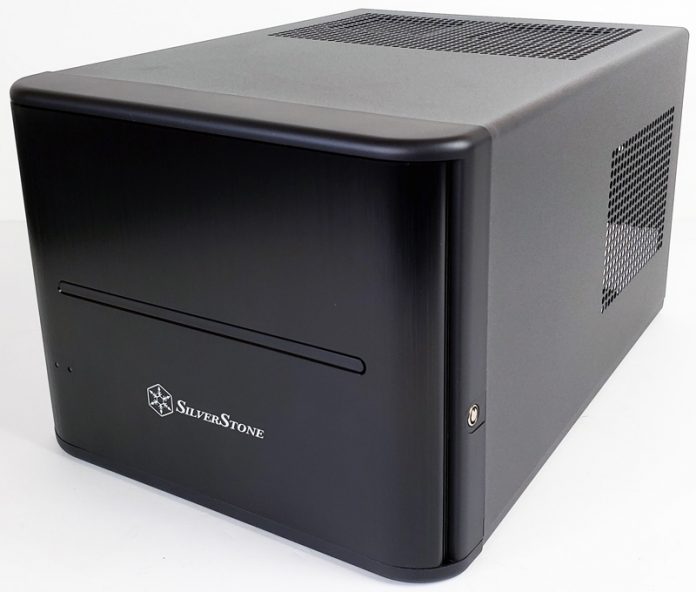



LOL… love the overkill! A nice Xeon D system with enough onboard SATA ports & 10 GbE… yeah. I realized SuperMicro offers 2 different PCIe- (2 or 4) NVMe drive cards… that or a video card would be a crazy converged widget. Or… a case like this that could take a FlexATX and you’d get 2 PCIe slots.
If I was ready to abandon 3.5″ drives/jump fully on the 2.5″ drive bandwagon this could be great. At this point I’m not there and I’m still waiting for their latest 8x 3.5″ drive case (CS 381 or something!?) to become available. That one can allegedly take a FlexATX board too…..
> Cable clearance is very tight but everything fits. The fully modular power supply is almost a must here.
This sentence on page 2 followed by a picture that explains very well that fully modular PSUs here are almost a no-go here. It is like the person arranging the pictures for this review strongly disagrees with the opinion of the reviewer here. LOL, it’s just hilarious. Now, look at the picture again and recall what the reviewer wrote on page 1:
> The power caps can be bent around very easily so care should be taken to not break them.
Now look at the clearance between those caps and the modular PSU cables at the photo. LOL, again…
Such compact cases with little space “behind” the PSU are a prime example of the one disadvantage modular PSUs have in such space-constrainted situations: A need for additional space for those plugs there.
A well-chosen non-modular PSU would have avoided modular PSU cables (almost) rubbing shoulders with the SATA connectors and buffer caps. Also note how the SATA backplane is aiding the (potential) use of a non-modular PSU, as it has three of the SATA ports relocated from the area where normally the cables of a non-modular PSU would exit the PSU case.
I am just on page 2 of the review and i already see myself starting to question the reviewers experience with regard to assembling systems and how much thought went into writing the review. Hmm, it almost feels like this review did not just review a Silverstone case, but needed to plug (pun intended) yet another Silverstone product series…
There’s enough room for modular just barely from the pics. I read that part as without modular you’d have too many cables inside so fully modular means you can cut down on cables? That’s reasonable to me. If modular didn’t fit, that’d be a problem. If it fits and cuts down cable clutter, that’s what I’d want.
Great review and build. Counting on STH to always do something over the top like this. Ya’ll rock.
And I’d do modular seeing this too.
@JaredD, you would buy a PSU fitting for the system, not buy a PSU with the mosts cables, no? Why would you think a non-modular PSU has to come with too many cables? There is no logic to this thought.
It fits doesn’t it? I’m totally perplexed. These guys have something that’s actually working and you’re set on some theoretical non-modular PSU that you don’t know if it would actually work. For me, I like examples with pictures of something working. They’ve shown it. You haven’t.
Ah, i see. A believer. “Some theoretical …”, “that you don’t know if it…” “they have shown it”. Well, i guess there is no point continuing…
nice review, but dissapoitting computer case.
2,5 inch hdd space? and….8 sata ports?
why not 3,5 inch hdd? and why not sff-8087 ports?
I had this case and unless they updated it there is really no airflow over the drives. I had 8 4tb 2.5″ spinners in this case and the ones towards the center were getting uncomfortably hot (don’t remember the temp, it’s been a while).
I have this chassis and I’m going to replace the motherboard as I’ve just used a consumer Asrock Z370m-ITX/AC and want one of those Supermicro boards. It really requires some dedication to build this system and one thing that could massively improve the situation for me, is if they could accept two mini-sas connectors and do the breakout on the backplane. But it really is a very nice chassis.
By the time I’m done filling it with 4TB HDDs, I think 4TB SATA SSDs should have dropped to an acceptable level and with 30TB 2.5″ SSDs being a reality already, I think there’s plenty of room for future growth.
Great article!
I’m surprised there’s any airflow over the drives once the front door is closed.
Why isn’t it mesh?
Bán nhà mặt phố Hoàng Hoa Thám, Hà đông, 98
mét vuông, 4 lầu, 9.6 tỷ.
You need to add the extra funs above the drive cage, otherwise the drives will heat up a lot, i have this cage and my drives (without extra fun) went over 70 degree celsius, i bought Arctic 10 Port PWM Fan Hub with SATA Power, 2x P8 PWM MAX, 82 mm x 82 mm, cut the hole in case above the drive cage and installed the funs sucking the air out of the cage, temp for the drives went down to 35-45 degree celisus, maybe some extra drilled holes in the sides of drive cage could lower the temp for side drives as well. I use 1TB 10RPM Dell brandes Savio drives.